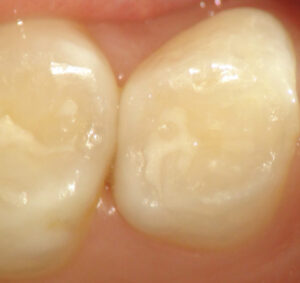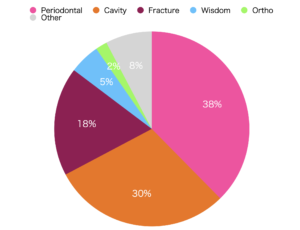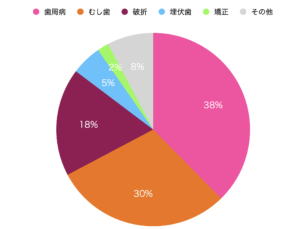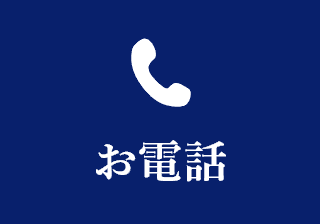How Long Do Teeth Last After Nerve Removal?The Truth About Tooth Longevity from 20 Years of Clinical Data

The data shown by Hiroshi Miyashita at the open seminar of the Japanese Society of American-educated Postdoctoral DENTISTS in 2025.
What Happens When You Remove a Tooth Nerve?
— A Specialist Explains the Hidden Risks to Tooth Longevity —
You may have heard that “teeth become weaker after the nerve is removed.”
But how long do such teeth actually last?
At Tokyo International Dental Roppongi, we analyzed data from patients who have maintained regular check-ups for over 20 years to uncover the real relationship between root canal treatment (nerve removal) and tooth longevity.
Have You Ever Had a Tooth Nerve Removed?
Many people have undergone nerve removal after deep dental decay.
I personally experienced this as a dental student — my professor performed the procedure on me.
Unfortunately, the anesthesia didn’t work well, and I still remember holding back tears from the pain.
(That would be unthinkable today, but at the time, pain management in dentistry was not as advanced.)
That treatment was done when I was 20 years old, and more than 45 years later, that tooth still remains functional.
However, not all teeth that undergo nerve removal survive that long.
📊 20-Year Clinical Data: Teeth With vs. Without Nerves
We reviewed 2,630 teeth from patients who had received continuous maintenance care at our clinic for over 20 years, comparing extraction rates between teeth with nerves and those without.
| Type of Tooth | Total Teeth | Extracted | Extraction Rate |
| Teeth with nerves | 2,191 | 33 | ~1.5% |
| Teeth without nerves | 439 | 42 | ~9.6% |
The results were striking:
Teeth without nerves were 6.7 times more likely to be extracted than those with intact nerves.
Why Does Removing the Nerve Shorten Tooth Lifespan?
Inside each tooth, the nerve (pulp) contains blood vessels and sensory fibers that keep the tooth hydrated and resilient.
Once removed, the tooth becomes brittle and more prone to fractures.
Additionally, without sensation, patients may not notice new infections or cracks until it’s too late.
In short, a tooth that has undergone nerve removal may look fine — but it carries a hidden risk.
Expert Insight: The Importance of Diagnosis and Prevention
I studied diagnostic sciences at the University of Gothenburg in Sweden and hold specialist certification in endodontics (root canal treatment).
From this experience, I have learned that accurate diagnosis and preventive care determine the true longevity of a tooth.
Even minor symptoms like “slight sensitivity” or “a feeling of pressure when biting” should never be ignored.
Early and accurate diagnosis can often prevent the need for nerve removal altogether.
🪥 Three Things You Can Do Today to Protect Your Tooth Nerves
- Regular Maintenance Visits
Attend routine check-ups to detect decay and gum disease early. - Bite (Occlusion) Management
Excessive biting forces can cause microcracks and damage the pulp. - Proper Management of Early Cavities
Conservative treatment decisions — such as avoiding unnecessary drilling — help preserve the nerve.
Summary: Protecting the Nerve Means Protecting the Tooth
- Teeth without nerves are 6.7 times more likely to be extracted
- Preventing large cavities is the best protection
- Early diagnosis and consistent maintenance extend tooth lifespan
Modern dentistry is shifting from “treating” to “preserving.”
Let’s work together to keep your natural teeth healthy for a lifetime.
Tokyo International Dental Roppongi
Dr. Hiroshi Miyashita, DDS.
Graduate of the University of Gothenburg, Departments of Periodontology and Oral Diagnostics
Specialist in Periodontics and Endodontics
Make an appointment for consultation today.
Tokyo International Dental Clinic Roppongi
- Address: 5-13-25-2nd Floor, Roppongi, Minato-ku, Tokyo
- Phone: 03-5544-8544
- Closest Stations:
- Azabu Juban (Toei Oedo Line take exit7)
- https://youtu.be/iIeG91YEJTA The way to the clinic from Ohedo Line Exit7
- Azabu Juban (Tokyo Metro Namboku Line exit 5a )
- https://youtu.be/3yniFSfucGg The way to the clinic from Namboku Line Exit 5a
- Roppongi (Hibiya Line exit 3)
We look forward to helping you achieve a healthy, beautiful smile!





















